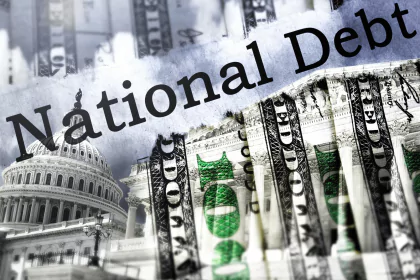Credit card debt can quickly spiral out of control if not managed properly. However, with the right strategies, you can regain control of your finances and work towards a debt-free future. In this article, we will delve into three of the most effective strategies for tackling credit card debt: the Debt Avalanche Method, the Debt Snowball Method, and Debt Consolidation. These methods have helped countless individuals reduce their debt and achieve financial stability. By understanding and implementing these strategies, you too can take meaningful steps towards managing your credit card debt effectively.
The Debt Avalanche Method
Understanding the Debt Avalanche Method
The Debt Avalanche Method is a systematic approach to paying off credit card debt that focuses on minimizing the total amount of interest paid over time. This method is particularly effective for individuals who have multiple credit card balances with varying interest rates and are looking to reduce their debt burden in the most cost-effective manner.
Debt consolidation can simplify your finances, but it requires discipline to avoid falling back into debt.
Credit Counselor At its core, the Debt Avalanche Method targets the debt with the highest interest rate first, while making minimum payments on all other debts. By doing so, it ensures that the most financially burdensome debt is eliminated as quickly as possible. This approach contrasts with the Debt Snowball Method, which prioritizes smaller debts for quicker psychological wins. Instead, the Debt Avalanche Method is grounded in financial efficiency, aiming to reduce the overall cost of borrowing.
Why Choose the Debt Avalanche Method?
The primary benefit of the Debt Avalanche Method is its focus on reducing the amount of interest paid over time. Since high-interest debts accumulate more interest charges, eliminating these debts first can lead to significant savings. This method is particularly advantageous for those with substantial high-interest debt, as it directly addresses the most expensive debt.
Moreover, the Debt Avalanche Method can shorten the overall debt repayment period. By consistently attacking the highest interest rates, borrowers reduce the principal balance more quickly, which, in turn, reduces the interest accrued over time. This accelerated repayment process can be highly motivating, especially as borrowers begin to see substantial reductions in their total debt.
How to Implement the Debt Avalanche Method
- List Your Debts by Interest Rate: Start by listing all your credit card debts in order of their interest rates, from highest to lowest.
- Make Minimum Payments: Continue making the minimum payments on all your debts to avoid penalties and fees.
- Target the Highest Interest Rate: Allocate any extra funds to the debt with the highest interest rate until it is paid off.
- Move to the Next Debt: Once the highest-interest debt is paid off, redirect your extra payments to the next highest interest rate debt.
Example of the Debt Avalanche Method
Suppose you have three credit cards with the following details:
- Card A: $5,000 balance at 20% interest
- Card B: $3,000 balance at 15% interest
- Card C: $2,000 balance at 10% interest
Using the Debt Avalanche Method, you would focus on paying off Card A first while making minimum payments on Cards B and C. Once Card A is paid off, you move to Card B, and finally to Card C.
Benefits of the Debt Avalanche Method
- Interest Savings: By paying off high-interest debts first, you reduce the total amount of interest paid.
- Faster Debt Reduction: This method can help you become debt-free faster, as more of your payments go towards the principal balance rather than interest.
Resources for More Information
For more details on the Debt Avalanche Method, check out these resources:
The Debt Snowball Method
Understanding the Debt Snowball Method
The Debt Snowball Method is a debt repayment strategy designed to help individuals build momentum and motivation by tackling their smallest debts first. This approach can provide quick psychological wins, which can be crucial for maintaining the discipline and motivation needed to continue paying off debts. Unlike the Debt Avalanche Method, which focuses on minimizing interest costs, the Debt Snowball Method emphasizes the emotional and motivational aspects of debt repayment.
Why Choose the Debt Snowball Method?
The primary advantage of the Debt Snowball Method lies in its ability to provide immediate positive feedback. By focusing on the smallest debts first, you can achieve quicker payoffs, which can be highly motivating. These small victories can build momentum, encouraging you to stay committed to your debt repayment plan. For many individuals, the psychological benefits of seeing debts disappear can outweigh the financial benefits of other methods.
The journey to financial freedom begins with the awareness of your current financial situation and a plan to improve it.
Financial Advisor Additionally, the Debt Snowball Method simplifies your financial management by reducing the number of debts you need to track over time. As you eliminate smaller debts, you can focus your attention and resources on the remaining larger debts, making the process feel more manageable.
How to Implement the Debt Snowball Method
- List Your Debts by Balance: Start by listing all your credit card debts in order of their balances, from smallest to largest.
- Make Minimum Payments: Continue making the minimum payments on all your debts to avoid penalties and fees.
- Target the Smallest Debt: Allocate any extra funds to the smallest debt until it is paid off.
- Move to the Next Debt: Once the smallest debt is paid off, redirect your extra payments to the next smallest debt.
Example of the Debt Snowball Method
Suppose you have three credit cards with the following details:
- Card A: $5,000 balance at 20% interest
- Card B: $3,000 balance at 15% interest
- Card C: $2,000 balance at 10% interest
Using the Debt Snowball Method, you would focus on paying off Card C first while making minimum payments on Cards A and B. Once Card C is paid off, you move to Card B, and finally to Card A.
Benefits of the Debt Snowball Method
- Psychological Boost: Paying off smaller debts quickly can provide a sense of accomplishment and motivate you to continue.
- Simplified Financial Management: Eliminating smaller debts reduces the number of payments you need to manage.
Resources for More Information
For more details on the Debt Snowball Method, check out these resources:
Debt Consolidation
Understanding Debt Consolidation
Debt consolidation is a financial strategy that involves combining multiple debts into a single loan, often with a lower interest rate. This approach can simplify your monthly payments, making them more manageable and potentially reducing the overall amount of interest you pay over time. Debt consolidation can be particularly beneficial for individuals with high-interest credit card debt, as it provides a structured way to pay off debt while minimizing interest charges.
Why Choose Debt Consolidation?
Debt consolidation offers several key benefits:
- Simplified Payments: By consolidating multiple debts into one loan, you reduce the number of payments you need to manage each month. This can make budgeting and financial planning easier and less stressful.
- Lower Interest Rates: Consolidation loans often come with lower interest rates compared to credit cards. This can lead to significant savings on interest payments, allowing you to pay off your debt more quickly.
- Fixed Repayment Schedule: Many consolidation loans come with a fixed repayment schedule, providing you with a clear timeline for becoming debt-free. This can help you stay focused and motivated as you work towards your financial goals.
- Improved Credit Score: By consolidating your debts and making timely payments, you can improve your credit score over time. A higher credit score can open up opportunities for better loan terms and financial products in the future.
Types of Debt Consolidation
There are several ways to consolidate your debt, each with its own advantages and considerations:
- Personal Loans: Personal loans are a common option for debt consolidation. They typically offer lower interest rates than credit cards and come with fixed repayment terms. You can use the loan to pay off your existing debts, and then focus on repaying the personal loan.
- Balance Transfer Credit Cards: Balance transfer credit cards offer a promotional period with low or zero interest on transferred balances. This can be an effective way to consolidate high-interest credit card debt. However, it’s important to pay off the balance before the promotional period ends to avoid high interest rates.
- Home Equity Loans or Lines of Credit (HELOCs): If you own a home, you may be able to use a home equity loan or line of credit to consolidate your debt. These loans often come with lower interest rates, but they require you to use your home as collateral, which can be risky if you are unable to make payments.
- Debt Management Plans (DMPs): Offered by credit counseling agencies, DMPs involve consolidating your debts into a single monthly payment. The agency negotiates with your creditors to lower interest rates and waive fees. This can be a good option if you need professional assistance with managing your debt.
How to Implement Debt Consolidation
- Evaluate Your Debts: List all your current debts and their interest rates.
- Compare Consolidation Options: Research different consolidation options such as personal loans, balance transfer credit cards, or home equity loans.
- Apply for a Consolidation Loan: Choose the best option for your situation and apply for the loan.
- Pay Off Your Debts: Use the consolidation loan to pay off your existing credit card balances.
- Focus on the New Loan: Make regular payments on the new loan, ideally paying more than the minimum to pay it off faster.
Example of Debt Consolidation
Suppose you have three credit cards with the following details:
- Card A: $5,000 balance at 20% interest
- Card B: $3,000 balance at 15% interest
- Card C: $2,000 balance at 10% interest
By consolidating these debts into a single personal loan with an interest rate of 10%, you could simplify your payments and potentially save on interest.
Benefits of Debt Consolidation
- Simplified Payments: Combining multiple debts into one loan reduces the number of payments you need to manage.
- Lower Interest Rates: If you qualify for a lower interest rate, you can save money on interest over the life of the loan.
- Fixed Repayment Schedule: Many consolidation loans come with fixed repayment schedules, making it easier to plan your finances.
Resources for More Information
For more details on Debt Consolidation, check out these resources:
Conclusion
Effectively managing credit card debt is crucial for achieving financial stability and peace of mind. Credit card debt can quickly become overwhelming, especially when interest rates are high and balances continue to grow. However, by employing a strategic approach and selecting the right debt repayment method for your situation, you can regain control over your finances and work towards a debt-free future.
The Debt Avalanche Method
The Debt Avalanche Method is a powerful tool for those looking to minimize interest payments and accelerate their journey to being debt-free. By prioritizing the repayment of high-interest debts first, this method ensures that you are tackling the most financially burdensome debts head-on. Over time, this approach can save you a substantial amount of money in interest charges, allowing more of your payments to go towards reducing the principal balance of your debts. This method is particularly suited for individuals who are financially disciplined and motivated by the prospect of long-term savings.
The Debt Snowball Method
For those who find motivation in seeing quick progress, the Debt Snowball Method can be exceptionally effective. By focusing on paying off the smallest debts first, this method provides immediate wins that can boost your confidence and keep you committed to your debt repayment plan. The psychological benefits of the Debt Snowball Method should not be underestimated, as the sense of accomplishment from eliminating smaller debts can drive you to continue your efforts with larger balances. This method is ideal for individuals who need regular encouragement and tangible results to stay on track.
Debt Consolidation
Debt Consolidation offers a practical solution for simplifying your debt repayment process and potentially lowering your overall interest costs. By consolidating multiple high-interest debts into a single loan with a lower interest rate, you can streamline your monthly payments and reduce the financial strain. This approach can be particularly beneficial if you are struggling to keep track of multiple due dates and interest rates. Debt consolidation not only simplifies your financial management but can also improve your credit score by demonstrating consistent, on-time payments on a single loan. It is a viable option for those who qualify for lower-interest consolidation loans and can commit to a structured repayment plan.
Combining Methods
In some cases, a combination of these methods may be the most effective approach. For example, you might start with the Debt Snowball Method to build initial momentum and then switch to the Debt Avalanche Method to focus on high-interest debts. Alternatively, you could use Debt Consolidation to manage and reduce interest rates on multiple debts and then apply either the Debt Avalanche or Debt Snowball methods to tackle the remaining balance. The key is to find a strategy that aligns with your financial situation, goals, and personal preferences.
Key Takeaways
No matter which strategy you choose, the important thing is to take consistent, proactive steps towards managing your credit card debt. Here are some key takeaways to keep in mind:
- Stay Disciplined: Regardless of the method you choose, discipline and consistency are crucial. Make regular payments, avoid new debt, and stick to your plan.
- Monitor Your Progress: Regularly review your debt repayment progress. Adjust your strategy as needed to stay on track and make the most effective use of your resources.
- Seek Support: If you find yourself struggling, don’t hesitate to seek support from credit counseling services or financial advisors. They can provide valuable guidance and help you stay on course.
- Celebrate Milestones: Acknowledge and celebrate your progress, no matter how small. Each payment brings you closer to your goal of being debt-free.
Final Thoughts
Managing credit card debt effectively requires a thoughtful and strategic approach. Whether you opt for the Debt Avalanche Method, the Debt Snowball Method, Debt Consolidation, or a combination of these strategies, each offers unique benefits that can help you regain control of your finances. By understanding these methods and implementing them diligently, you can make significant strides in reducing your debt, improving your financial health, and ultimately achieving financial stability and freedom.
Remember, the journey to becoming debt-free is a marathon, not a sprint. Stay committed, be patient with yourself, and remain focused on your long-term financial goals. With determination and the right strategy, you can overcome your credit card debt and pave the way for a brighter financial future.












